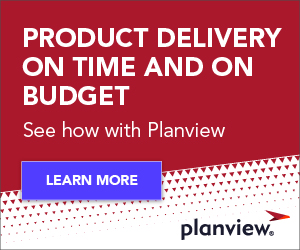
Eight forces are hurtling towards you with increasing velocity. Over the past few months I’ve detailed all of them and how they can damage your ability to compete. Will they run you over, or will you be able to deftly handle them as opportunities to innovate and grow? This post serves as a quick summary of each one and why we think WRM is your answer. First, the Cliffs Notes version:
- Technology, resources, unstructured work exploding
- Teams and work methods expanding, splintering
- PPM is not enough anymore
- Rethink your outcomes, capabilities and plans
- Embrace work and resource management
The Eight Ways Your World Is Changing (and why you should pay attention):
- Outcomes are different. Think higher than projects. What are the end products and services your organization is trying to deliver? How do your projects fit into the bigger picture? What are all the outcomes needed to get there – the technologies, applications, products, services, solutions and other fundamentals required to achieve your strategic objectives? Only when you understand these outcomes can you harness expertise from every area of the business and execute across your company, partners, suppliers, and others.
- Capabilities must be strategic. During this time of digital transformation and changing business models, you must constantly analyze what you are delivering to the market. What are your core competencies as an organization? What competencies do you need to add to fulfill your strategic goals? Successful organizations are adapting and building their capabilities as vital links between strategy and execution.
- Work methodologies are proliferating. How many different work methods are your employees and departments using to get work done? Lean? Agile? Phase-gate? Something you’ve never heard of before? Specialization is good – but at some point someone in the organization must understand how all that work contributes to the whole. PPM has traditionally only focused on project work – leaving a huge swath of day-to-day work out of the picture. You must understand how all the different work methodologies impact the organization and its strategic objectives.
- Unstructured work is exploding. Much of the work that traditional PPM ignores is the fuel your company runs on: The day-to-day meetings, tasks, communications and other actions employees take to keep the organization functioning. As companies rush to innovate and keep up with customer demand, this work must be accounted for along with traditional projects and work methodologies. If not, you risk your employees doing work that does not support the company’s overall goals and objectives.
- Plans are even more critical. Ensuring that everyone’s work contributes meaningfully to the whole requires having a plan. This goes beyond the rigidity of annual planning to the agility of planning quarterly, monthly, and even weekly. This includes the ability to adapt plans continuously based on real-time information that is available to everyone.
- Teams are virtual and global. Your team members are increasingly working across geographies as well as cultural and organizational boundaries. This makes collaboration even more difficult. The proliferation of apps and other toolsets can hinder rather than help teams. Many continue to rely on traditional, outdated tools such as e-mail and spreadsheets that are not conducive to collaboration.
- Technology is everywhere. Technology is permeating every facet of your business. Organizations are trying to incorporate technology into everything, including their products, customer-facing tools, sales, marketing, services, and beyond. Technology is no longer the sole purview of IT, yet your IT group remains integral to making tech work across the business. Digital transformation is an extremely complex change management endeavor. To be successful, you must adapt not only technically, but also culturally and operationally.
- Resources are multiplying. Resources are no longer confined to your people and finances. Today, resources are all the items that you must account for to successfully achieve your goals, including technology, virtual teams, locations, assets, the Internet of Things and many more.
How to Address Them with Work and Resource Management:
Obviously, software alone cannot address the complexity of these eight forces. But it’s a great place to start. As Ventana Research has written: “Organizations are faced with the reality that they have dozens of business applications to track and manage work and resources, complicating processes that would be simpler with a unified approach … Having a dedicated software approach to manage the work life cycle and use of resources is becoming an imperative for organizations; it will reduce the chaos of work distractions and ensure work can be conducted and tracked toward objectives.”
This is what led Planview to create “work and resource management,” a comprehensive category of technology capabilities that address a broader set of work and resource challenges. We are not trying to pretend to have all the answers with a Swiss Army knife of a product. What our work and resource management (WRM) approach does is embrace the realities of what organizations like yours are facing and how you are working today. Our suite of solutions includes portfolio and resource management, strategic planning, work collaboration and enterprise architecture:
- Planview® Portfolios: Enterprise-wide Portfolio and Resource Management and Capability and Technology Management
- Planview® PPM Pro: Mid-Tier Project Portfolio and Resource Management
- Planview Projectplace®: Collaborative Work Management that Empowers Teams
- Planview AgilePlace®: Enterprise Kanban for Engineers
Together, these solutions create a unified vision to leverage work and resources to realize your organization’s full potential. They serve rapid unstructured work as well as strategic planning and aligning resources to deliver upon your strategy.
As you face the eight forces, what is the risk of not embracing work and resource management? Here’s what Ventana Research says:
“Without such an approach, organizations increasingly will find themselves without the ability to act and respond as needed and will find themselves unable to ensure the change and ‘continuous optimization’ that is needed to achieve the level of results required in the timeframe expected.”
Take a look at WRM now. Here’s the link to our full complement of resources, including white papers, video, infographic and much more: Planview Work and Resource Management.




